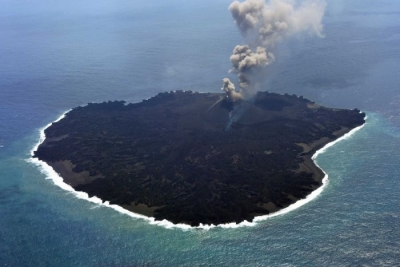
These islands are formed from layers of magma, or liquid rock, which erupts from a volcano under the water, then cools and hardens. The magma layers eventually build up to create an island.
Volcanic islands are formed by volcanic activity on the seabed, often near the boundaries of the tectonic plates that form Earth’s crust. Where two plates pull apart, lava erupts to form an undersea ridge. Layers of lava build up until a ridge breaks the sea’s surface to form an island. Sometimes a whole chain of volcanic islands, called an island arc, is formed in this way. Some island arcs contain thousands of islands.
Sometimes, volcanoes occur in close proximity to each other on the sea floor, creating a very large island. For example, the big island of Hawaii is actually five, side-by-side volcanoes that have grown together. The island chain of countries that make up Southeast Asia; Indonesia and Papua New Guinea, the Philippine Islands were all created by volcanic activity on the sea floor. New Zealand, the Island country off the Southeast coast of Australia, was also formed by ancient volcanoes.
Picture Credit : Google

